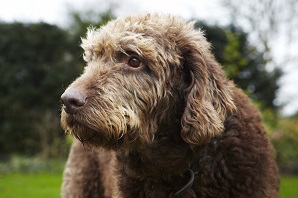Dog and cat grooming: why it's not just Crufts entrants that need care and attention

Pet grooming is often perceived as being purely for beauty, but in reality it’s hugely important for their health and well-being – even if you’re not planning to enter them in Crufts.
How often you groom your pet will depend on a number of factors (such as the length of their coat) but it’s an important part of every pet’s routine.
Grooming can help you spot fleas, bumps and cuts as well as skin problems – and will also help you bond with your pet.
Petplan has put together some useful tips to help you get started with dog and cat grooming…
Start grooming your pet when they are young
You should try to get your pet accustomed to grooming while they are still a puppy or kitten.
If you wait too long to begin grooming, your pet may find it harder to get used to – especially when it comes to things such as nail clipping.
Be patient when grooming your pet
If your pet is particularly energetic, you might find it hard to keep them still for long enough to thoroughly groom them.
Don’t get disheartened though. Start simply, by taking a small section of their coat and groom them for little longer each time with lots of praise afterwards.
With plenty of patience, your pet can actually enjoy being groomed and it can also improve the bond between you and your pet.
Brush your pet's coat regularly
You should try to brush your dog a few times a week, or slightly less for dogs with short hair.
Use a specialist brush or comb and groom small sections of hair at a time. Holding your hand close to your dog’s skin will reduce any tugging and make it easier to see any dirt, abnormalities or fleas (little black specks can indicate your pet has fleas).
Similarly, cats also need regular coat grooming. While cats famously take care of much of their grooming themselves, a little help from you can help reduce hairballs in the stomach and improve their circulation.
Shorthaired cats don’t require much coat grooming (although you should still make the effort every few weeks), while long haired cats need their coat groomed on a daily basis otherwise their fur can become knotted very quickly.
Consult your vet for advice on the best way for you to begin grooming your pet.
Ensure your pet’s eyes and ears remain healthy
When you come to groom your pet, you should also be checking for any abnormalities with their eyes and ears – regardless of whether you have a cat or dog.
Tell your vet if you see any redness, irritation, or cloudy eyes as any of these symptoms could indicate an infection or a larger underlying problem.
See Petplan's cat and dog insurance pages for more information on our policies and offers.
Keep your pet’s nails trimmed
Active dogs may not need nail trimming, but it’s important to check regularly as long nails can curl and grow into your dog’s paws causing pain and infection – much like ingrowing toenails in humans.
Cats cans suffer similar issues and can be just as prickly if they aren't familiar with the clippers. Ensure your cat or dog is comfortable with the nail clippers and be extremely careful when trimming their nails.
Ask your vet to instruct on how best to trim nails before trying it at home.
Do you have any pet grooming tips or stories? Let us know below…

